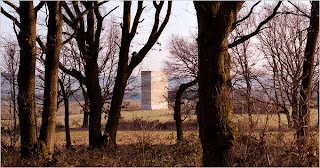
A life lived with artful intention becomes a work of art. Honoring the creative impulse, however odd or unusual it might seem — and perhaps especially when it seems odd or unusual — often leads to the accidental masterpiece.
So concludes the pre-imminent art writer of our time, Michael Kimmelman, who explores this idea in a thoughtful collection of essays on contemporary, timeless and even eccentric amateur artists. (Among other things, he profiles a dentist and self-made curator who amassed a collection of 75,000 lightbulbs, turning his basement into what he billed the Museum of Incandescent Lighting. As a consequence of obsessively narrowing the lens, even this seemingly mundane object — man-made lighting — becomes a canvas for surprising revelations about human history, discovery, evolution, beauty, mastery and wonder: the curiosities of life.)
Journalist Kimmelman (a sensitive observer who is not to be confused with a mere critic) recently produced another one of his small masterpieces for the New York Times Magazine, this time on the Swiss architect Peter Zumthor. The article reveals the character of one marginally famous man working in a creative field, what he stood for, and, by standing true, what his art conveys. Here’s a description of the hauntingly simple chapel-built-for-one pictured above right:
“(Zumthor’s Bruder Klaus chapel, in western Germany) rises from a modest ridge above the farming village of Wachendorf. In winter, a few deer gambol through crunching snow from the surrounding forest, sniff then retreat. The uphill trek from the nearest road, across an empty field, acts like a natural decompression chamber before the first glimpse of the building: an abrupt concrete block with an odd triangular door on one end.
Inside, pitched walls lead to a sort of cave or teepee with a high, teardrop oculus, open to the sky. A handful of people fit comfortably in the space, but ideally it’s made for one or two. Bruder Klaus was a hermit. There are no windows; there is no electricity or running water. Where a central altar might be, there’s a shallow pool of water, formed of rain and snow falling through the oculus. Small bottle-glass portholes add points of light, and undulating walls bear the imprints of 112 spruce trees, chopped down from Zumthor’s clients’ farm, then slowly burned, leaving blackened traces in the thick concrete.
“A small space to be quiet” is how Zumthor described the chapel to me. For the few solitary minutes I spent inside it, it seemed like the most peaceful and secret spot on earth.
The story goes that a family of devout farmers wrote to Zumthor, out of the blue, having hardly a clue of who he was, knowing only that the archbishop in nearby Cologne had hired him to plan a museum, and they asked him to build a field chapel for them — and Zumthor agreed, as long as they could wait a decade. I visited the family at their home. They turned out not to be yokels but prosperous and sophisticated, and they were perfectly aware of who he was. Zumthor, who waived his fee because he found the project intriguing, and who devoted years, as it turned out, to devising the chapel with a construction method that would allow villagers to build it themselves, house-raising-style, now grumbles about how much the chapel ultimately cost him, and how his clients kept trying to cut corners, although he said they ultimately acceded to everything.
Still, the original story has a kernel of truth, because with Zumthor a client is entering, firstly, into a relationship that entails Talmudic discussions and Job-like patience. Ask for an appointment with him, and you may get no response for days or weeks. He employs no publicist, dedicates no aide to media relations. Zumthor has long done what he wants and only what he wants. This has been his virtue and burden, inviting comparison with the late American genius Louis Kahn, another proud perfectionist who built just a few buildings, making the most of a coterie of committed clients to leave behind a handful of masterpieces.”
So many little revelations are packed into this one small slice of story. But most of all, it serves to illuminate the creative impulse that lies at the heart of the artist (dreamer, visionary) versus the mere conveyer of “product.”
In a lengthy, friendly phone conversation with Bob Blair, the chef/owner of Denver’s Fuel Café, many of the same themes arose: the importance of integrity and authenticity, of honoring quality ingredients (Zumthor, the architect, likes to work with real wood, which he says feels healthier to the body and even has an effect on the skin, but which most architects now consider “too expensive, too complicated and too old-fashioned”) and of deliberately choosing to be small and “off the beaten path” as a way to ultimately make a big impression.
Feel-good marketing aside, there still aren’t a lot of chefs who exhibit Zumthor’s level of missionary zeal. Or Bob Blair’s. As he described to me his quest to track down a non-GMO cooking oil, his level of commitment to sourcing wholesome, sustainably grown products was abundantly clear. It’s exciting to find examples of such artists in our midst: architects who take their cues from nature, history and a sense of place; chefs and farmers who remain first-and-foremost dedicated craftsmen; writers who unearth the complex and subtle truths about what it means to be fully and deeply human. In a time when so much of what surrounds us has been reduced to assembly line commodity, these “accidental masterpieces” stand out, give us pause, light up our imagination.





